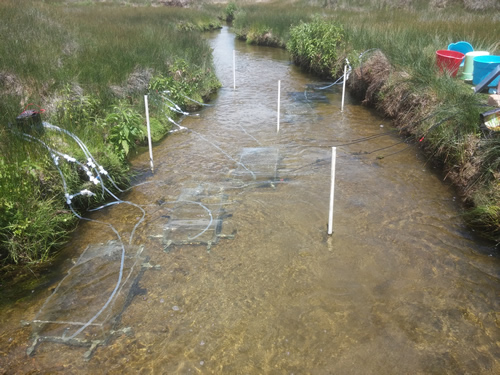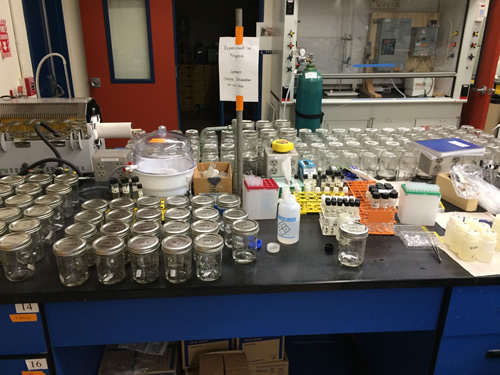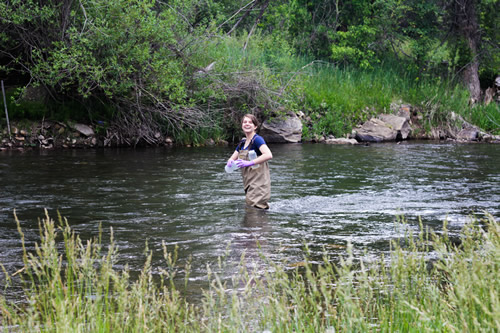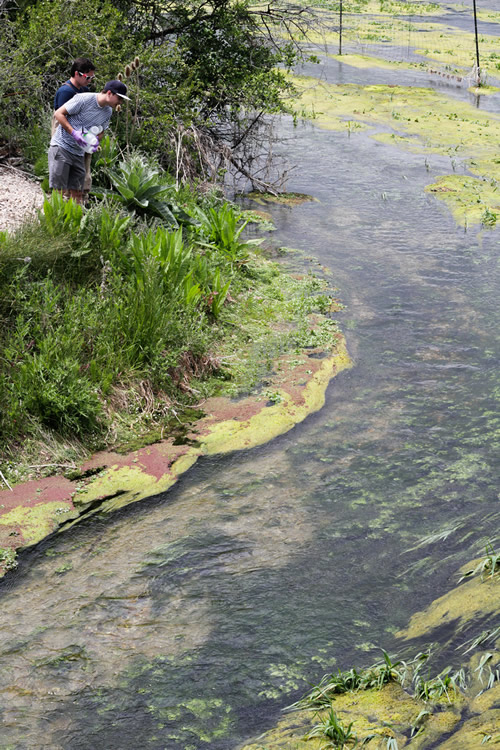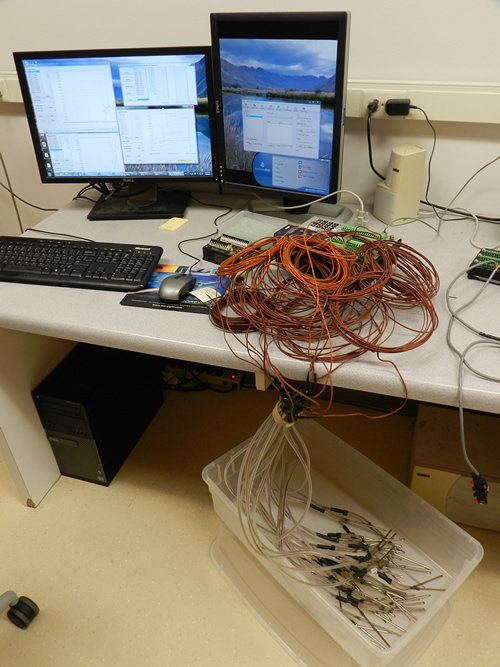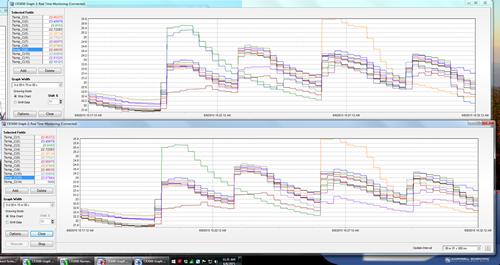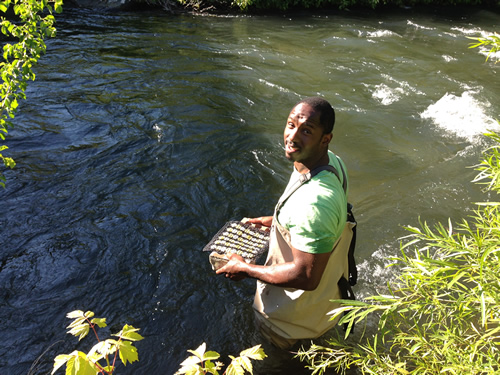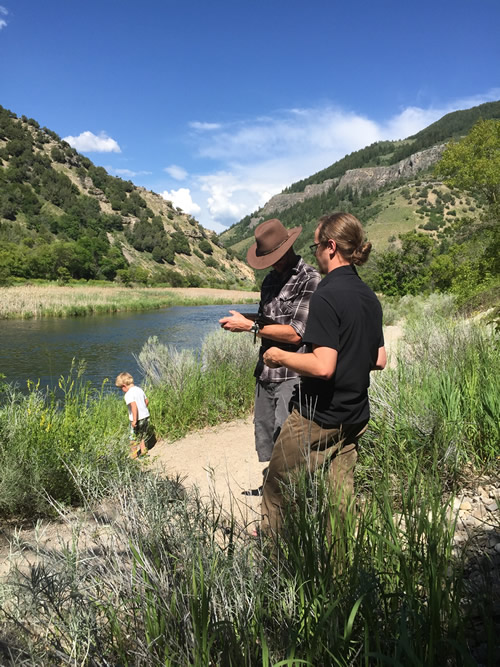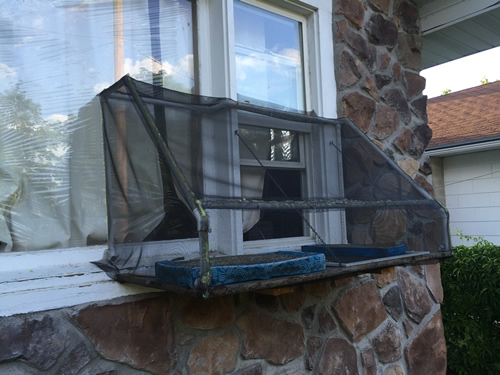iUTAH Undergraduate iFellows
Week 4 Recap
June 8-12, 2015
Kyle Ahn
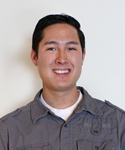 Week 4 was a little shorter than usual. However, it has been worthy of a recap either way. My understanding of the project is getting to the point where I can set my own goals and timeline. I have more responsibility with less oversight by my mentor and faculty. The ability to and responsibility of conducting my own timeline is a great introduction into professional academia.
Week 4 was a little shorter than usual. However, it has been worthy of a recap either way. My understanding of the project is getting to the point where I can set my own goals and timeline. I have more responsibility with less oversight by my mentor and faculty. The ability to and responsibility of conducting my own timeline is a great introduction into professional academia.
The first half of the MeHg samples went very well. The data was consistent and the blank was promising. I have prepped the second half and am eagerly awaiting results. The pending test includes the standard and will give us a good understanding of how successful our method is.
Amanda Araujo
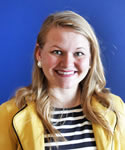 This week I feel like I accomplished a lot! It was the first time by myself that I've really encountered coding, and after much time and patience I successfully set up a code that allows for multiple sensors to be used at the same time in the CR800/CR1000. It took a lot of trial and error, but it eventually worked out to give us the proper feedback in PPM.
This week I feel like I accomplished a lot! It was the first time by myself that I've really encountered coding, and after much time and patience I successfully set up a code that allows for multiple sensors to be used at the same time in the CR800/CR1000. It took a lot of trial and error, but it eventually worked out to give us the proper feedback in PPM.
Viviane Baji

This week we got familiar with our research questions and sought the best literature review strategies. I¹ve had several research topics to think about but all of them revolve around the survey question that asks about environmental concern. Narrowing it down will depend on the availability of previous literature and what can be answered by the data we have. This week we also learned how to collect geospatial coordinates on GPS units in preparation for a few days out in the field next week.
Jesse Fleri

This has been my busiest week thus far. We spent 3 days (Tue, Wed, Fri) in the field near Park City collecting water, sediment, and dissolved oxygen measurements. Most of the laboratory time needed to be done immediately upon getting back from the field so its been long nights followed by early mornings. Lab testing has been tedious with several analyses being run on over one hundred samples. Luckily, I've improved sampling speed for the BOD test I started on week 2, which has been a huge help for this week.
Joshua Gathro
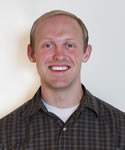 This was another great week. On Monday and Thursday we got to go sample some more wells, 5 in total. It has been a lot of fun to see new sites and learn about the different wells. It turned out that one man we visited on Monday, who we knew owned a well, also owned rights to a spring near his property that he tapped into as his primary source of drinking water. So we went back on Thursday to sample the spring, and there was a noticeable difference in the quality of his spring water versus the quality of his well water. The results of our hot spring samples analysis also came back this week. Arsenic levels aren't as high as we anticipated, although they are still higher than any of the wells we've sampled. And we got another lead on an area with remarkably high levels of arsenic. We'll be doing more next week to sort out and further investigate the clues.
This was another great week. On Monday and Thursday we got to go sample some more wells, 5 in total. It has been a lot of fun to see new sites and learn about the different wells. It turned out that one man we visited on Monday, who we knew owned a well, also owned rights to a spring near his property that he tapped into as his primary source of drinking water. So we went back on Thursday to sample the spring, and there was a noticeable difference in the quality of his spring water versus the quality of his well water. The results of our hot spring samples analysis also came back this week. Arsenic levels aren't as high as we anticipated, although they are still higher than any of the wells we've sampled. And we got another lead on an area with remarkably high levels of arsenic. We'll be doing more next week to sort out and further investigate the clues.
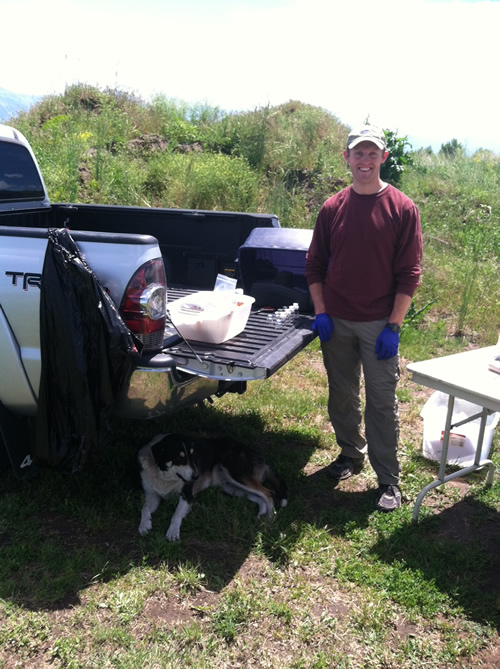
When we pulled up to sample from the spring, this dog came right over to enjoy the shade from our truck. On the tailgate I'm using a spectrophotometer to analyze for Fe (II) and Sulfide.
Natasha Griffin
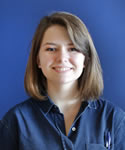 I finally got to go sampling for my DNA extraction experiment this week, which was very cool. We filtered our samples and began the factorial experiment we designed. Our primers and cloning kit arrived. I also started that so we can start our cloning reaction as soon as we determine the best extraction method.
I finally got to go sampling for my DNA extraction experiment this week, which was very cool. We filtered our samples and began the factorial experiment we designed. Our primers and cloning kit arrived. I also started that so we can start our cloning reaction as soon as we determine the best extraction method.
Sawyer Hill
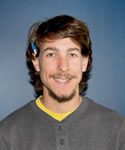 This past week, we spent the beginning of the week updating a previous tree survey done on the engineering quad at the University of Utah. This involved us taking surveying equipment (a view finder equipped with a compass and laser) around campus to fill in trees that had previously been missed as well as re-surveying old trees that had been mixed up during the cataloging process. Apart from making sure all of the trees in the engineering quad were surveyed, we surveyed almost 100 new trees on another part of campus where we will be starting to set up sap flux measurements this coming week. We finished the week off by assisting in the installation of a 3-meter energy flux tower in the middle of the engineering quad on campus, which is comparable to the GAMUT stations that are managed by iUTAH. This involved a few hours spent in the sun digging up sod to install heat flux plates and temperature and moisture probes, as well as piecing together the actually tower, and attaching sensors.
This past week, we spent the beginning of the week updating a previous tree survey done on the engineering quad at the University of Utah. This involved us taking surveying equipment (a view finder equipped with a compass and laser) around campus to fill in trees that had previously been missed as well as re-surveying old trees that had been mixed up during the cataloging process. Apart from making sure all of the trees in the engineering quad were surveyed, we surveyed almost 100 new trees on another part of campus where we will be starting to set up sap flux measurements this coming week. We finished the week off by assisting in the installation of a 3-meter energy flux tower in the middle of the engineering quad on campus, which is comparable to the GAMUT stations that are managed by iUTAH. This involved a few hours spent in the sun digging up sod to install heat flux plates and temperature and moisture probes, as well as piecing together the actually tower, and attaching sensors.
Joseph Ipson
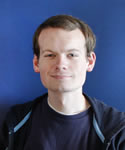 I began this week by testing all of the thermocouples to verify that they were all working right. As you should be able to see in the picture, there were a few that were behaving abnormally and will need to be fixed. Later I installed another one of the heat flux plates and thermocouples at the Tony Grove station. I also spent a fair amount of time on making documentation for what I've been doing, so that the processes can be repeated after I'm gone.
I began this week by testing all of the thermocouples to verify that they were all working right. As you should be able to see in the picture, there were a few that were behaving abnormally and will need to be fixed. Later I installed another one of the heat flux plates and thermocouples at the Tony Grove station. I also spent a fair amount of time on making documentation for what I've been doing, so that the processes can be repeated after I'm gone.
Matthew Johnson
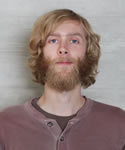 I have spent a lot of time refining (and changing) my research focus topic this week. I am researching what effects and drives landscaping preferences in the state of Utah. So far, I have found a fair amount of interesting literature on the subject. I am excited to see how patterns in the data we collected might compare. This summer is flying by too fast!
I have spent a lot of time refining (and changing) my research focus topic this week. I am researching what effects and drives landscaping preferences in the state of Utah. So far, I have found a fair amount of interesting literature on the subject. I am excited to see how patterns in the data we collected might compare. This summer is flying by too fast!
Heather King
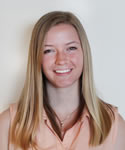 This week it has been exciting to see our project take shape. We have accomplished quite a bit thus far. One of our biggest tasks was converting our tree data in an excel spreadsheet into an xml file, which took quite some time experimenting to find the best way to easily convert the data. Another large task, which we accomplished was installing the flux tower on the University of Utah campus.
This week it has been exciting to see our project take shape. We have accomplished quite a bit thus far. One of our biggest tasks was converting our tree data in an excel spreadsheet into an xml file, which took quite some time experimenting to find the best way to easily convert the data. Another large task, which we accomplished was installing the flux tower on the University of Utah campus.
Don Long
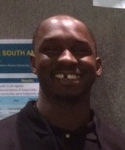 This was a heavy week! We executed our second and third deployment. The second deployment was allocated in the Logan River, while the third deployment was placed in the Provo River. Substantial hours were spent in the lab during the week manufacturing the deployment apparatus, and 12 hours was spent on Friday executing the deployment. These replicates will remain in the rivers for a number of weeks in which they will cultivate biofilms that are being exposed to various nutrient and pharmaceutical combinations. They will then be pulled out of the river and various parameters will be measured to see the effects the various substrates. A little word of advice to my fellow researchers who are out in the field: Guard your research notes with your life and make sure you have a back-up copy! Our notebook, which had weeks of pertinent information, just about got washed down the river into oblivion. That would have been a very tragic day.
This was a heavy week! We executed our second and third deployment. The second deployment was allocated in the Logan River, while the third deployment was placed in the Provo River. Substantial hours were spent in the lab during the week manufacturing the deployment apparatus, and 12 hours was spent on Friday executing the deployment. These replicates will remain in the rivers for a number of weeks in which they will cultivate biofilms that are being exposed to various nutrient and pharmaceutical combinations. They will then be pulled out of the river and various parameters will be measured to see the effects the various substrates. A little word of advice to my fellow researchers who are out in the field: Guard your research notes with your life and make sure you have a back-up copy! Our notebook, which had weeks of pertinent information, just about got washed down the river into oblivion. That would have been a very tragic day.
Zack Oldroyd
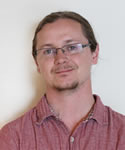 My 4th week as an iUTAH ifellow was primarily spent out talking to people in the different parks around Logan, Utah. Having solidified our circuit, we started to play around with the times we were going out and talking to people, to see if it would result in different demographics being met. We had a lot of great interviews, but one in particular stuck out. It was with a man who was originally from Mexico City. His perceptions on our water situation and how it compares to what he experienced as a child was fascinating.
My 4th week as an iUTAH ifellow was primarily spent out talking to people in the different parks around Logan, Utah. Having solidified our circuit, we started to play around with the times we were going out and talking to people, to see if it would result in different demographics being met. We had a lot of great interviews, but one in particular stuck out. It was with a man who was originally from Mexico City. His perceptions on our water situation and how it compares to what he experienced as a child was fascinating.
Elizabeth Tanner
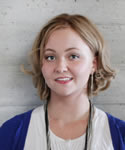
André Valle
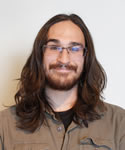 For week 4 Utah Water Voices finally took flight. I got out into the field a lot more this week and upon performing more interviews I have begun to see some patterns and trends amongst the public perception of water up here in Logan. We expanded our site selection to an additional site (3rd dam) and it has thus far proven to be successful. On another note, we have now deployed a 3rd person on our team, Alex Brown, and this is exciting to us so we can further maximize our data collection. Next week, we'll be traveling down to SLC to attend a conference and subsequently sample down there for a few days. We have also begun developing our poster strategy and finally, we rounded up another week with an "all hands" team meeting. Something cool I saw? Someone's house I saw had a 'catio.' A hand-built patio for a cat that was fashioned onto a window without a sill -Catio.
For week 4 Utah Water Voices finally took flight. I got out into the field a lot more this week and upon performing more interviews I have begun to see some patterns and trends amongst the public perception of water up here in Logan. We expanded our site selection to an additional site (3rd dam) and it has thus far proven to be successful. On another note, we have now deployed a 3rd person on our team, Alex Brown, and this is exciting to us so we can further maximize our data collection. Next week, we'll be traveling down to SLC to attend a conference and subsequently sample down there for a few days. We have also begun developing our poster strategy and finally, we rounded up another week with an "all hands" team meeting. Something cool I saw? Someone's house I saw had a 'catio.' A hand-built patio for a cat that was fashioned onto a window without a sill -Catio.
Jamie Vawdrey
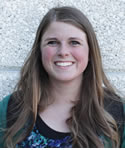 It has been another great week as an iFellow! I have been looking at GIS data from the city and started on a different project. I have been learning so many things while training with iUTAH.
It has been another great week as an iFellow! I have been looking at GIS data from the city and started on a different project. I have been learning so many things while training with iUTAH.
Darianne Willey
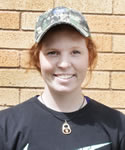 After gathering samples of Salt Lake City stormwater, I have been learning about and completing water quality analysis in the lab.
After gathering samples of Salt Lake City stormwater, I have been learning about and completing water quality analysis in the lab.
Shannon Williams
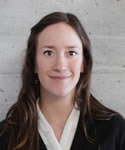 This week I spent more time on my proposal revolving around neighborhood norms, which involved expanding the literature review and elaborating on the methodology. I also had the chance to spend some time in the field, which involved two days performing observational analysis within each neighborhood to get a deeper feel of true behaviors within each area.
This week I spent more time on my proposal revolving around neighborhood norms, which involved expanding the literature review and elaborating on the methodology. I also had the chance to spend some time in the field, which involved two days performing observational analysis within each neighborhood to get a deeper feel of true behaviors within each area.
Margaret Wolf
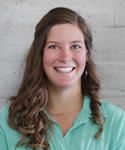 This week I helped develop a procedure to stimulate a rainfall. I am trying to find out the chemical changes of rainwater runoff when it encounters different surfaces. The photos below show an example of us stimulating a "rainfall event" to catch runoff from two different roofing surfaces. We hope to see what chemical fingerprint each different roof surface has and eventually if those chemical signatures end up in Red Butte creek. This week I was able to develop research methods and take both roof samples as well as storm samples from real rain.
This week I helped develop a procedure to stimulate a rainfall. I am trying to find out the chemical changes of rainwater runoff when it encounters different surfaces. The photos below show an example of us stimulating a "rainfall event" to catch runoff from two different roofing surfaces. We hope to see what chemical fingerprint each different roof surface has and eventually if those chemical signatures end up in Red Butte creek. This week I was able to develop research methods and take both roof samples as well as storm samples from real rain.
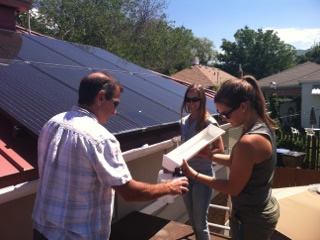
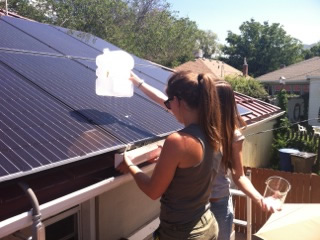
Making it rain with Dr. Paul Brooks and Master's student Mallory Millington

